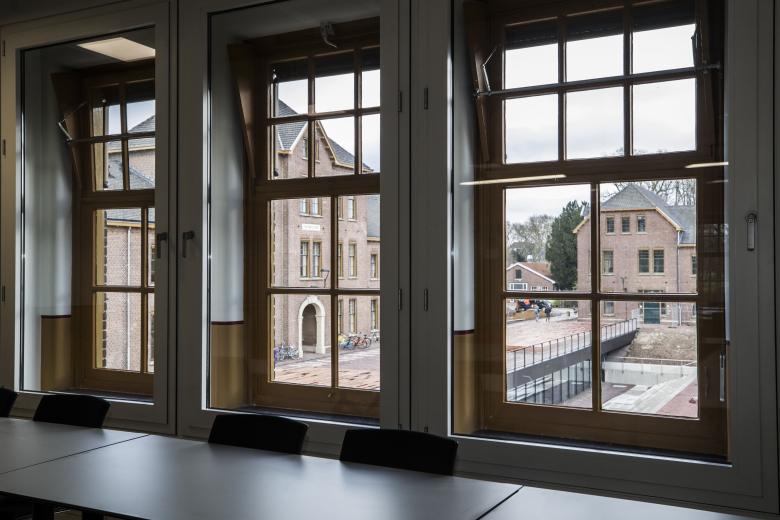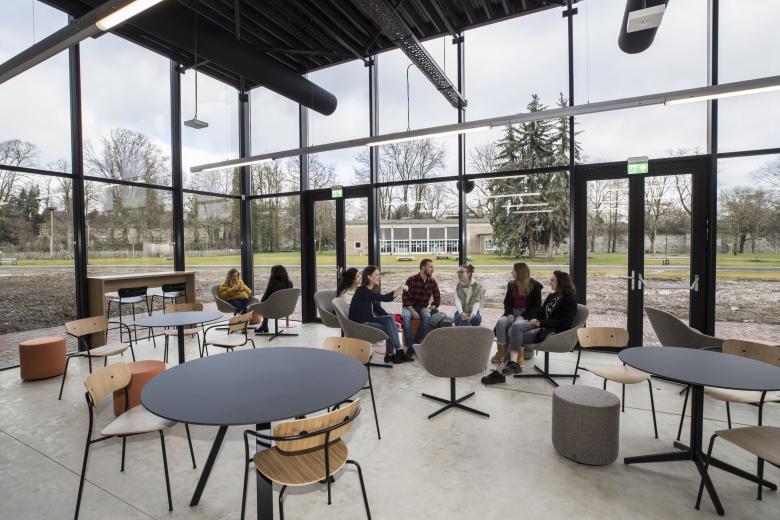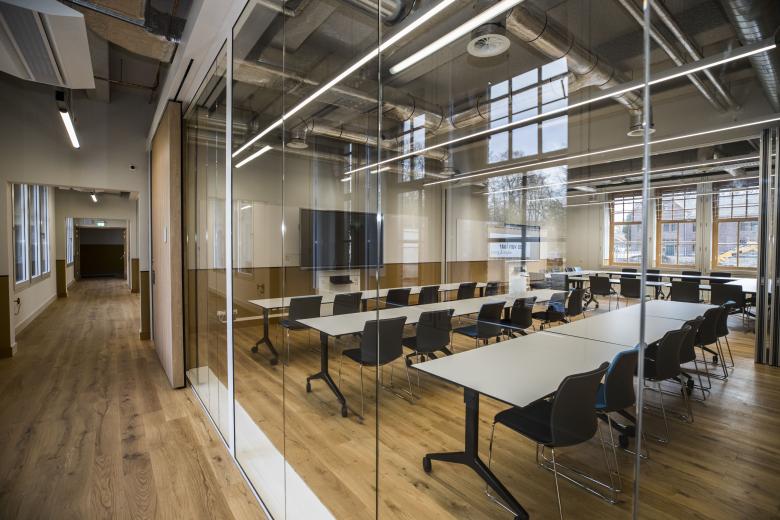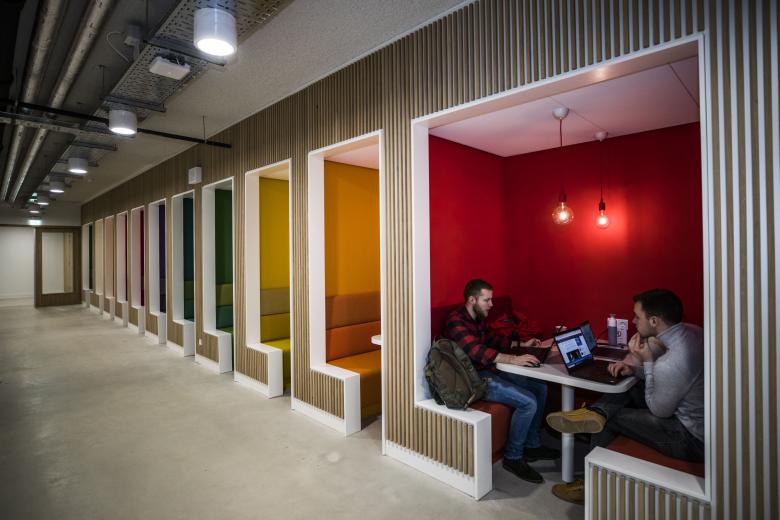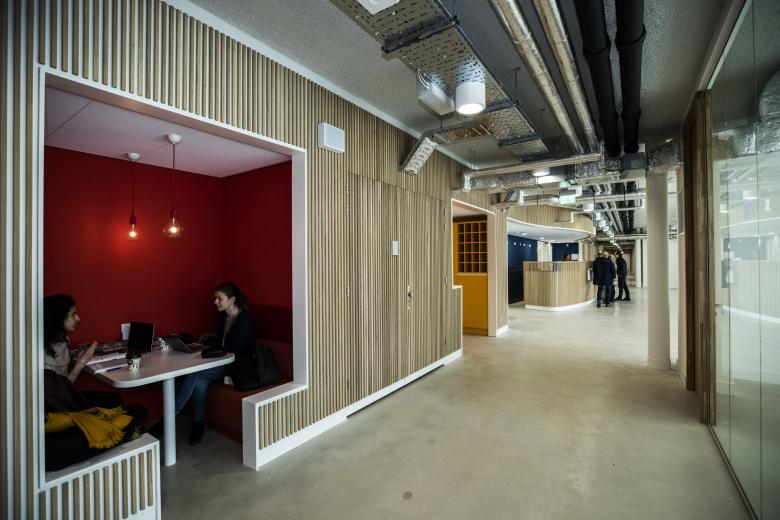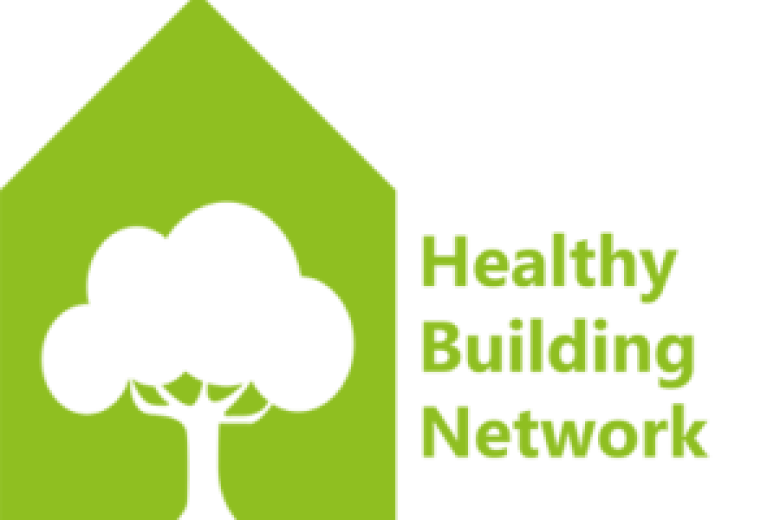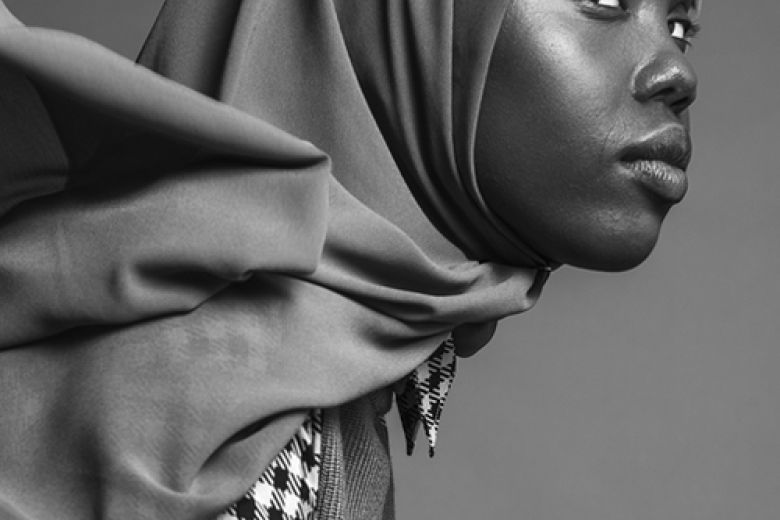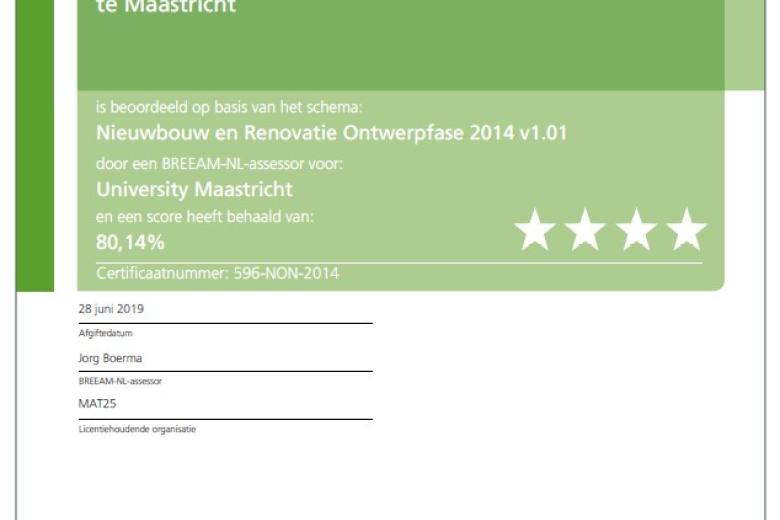Redeveloping Tapijn
With 'learning' as the central theme, Maastricht University, the Municipality of Maastricht and the Province of Limburg are working together to revitalise the former Tapijn barracks. The area will be converted into a public park, with buildings that are intended for education and research, as well as eateries for the broader public. Tapijn is a place where the students, businesses and residents of the city come together.
Space for education and research
Tapijn will provide space for education and research. In particular, the Maastricht Science Programme, part of the University Library and part of the School of Business and Economics will be housed there. The buildings are equipped with two lecture halls, teaching rooms to support Problem-Based Learning and new learning spaces for students.
Connecting old and new
The renovated three characteristic pavilion buildings are located around the former roll call location. Architect LIAG has connected this under ground level - under the park - with a new platform or 'plinth'. By 'sliding' the connecting building part under the park, the site is provided with a maximum area of new public park. The typical historic pavilions as separate buildings remain so recognizable and are nevertheless interconnected.
Give meaning to the historical heritage
The underground design and use of the original material and color reinforces and emphasizes the character of the military area. Important features of the monuments such as the layout, window detailing and stairs are preserved. Spaces have been given names of the NATO alphabet, so that the historical context is also visible in this way.
- Text continues below the photo -
Process
The entire transformation of both the park and the buildings will take place in three phases. In phase 1/Park, the animal park and the Tapijn gardens are revamped; that was completed in the summer of 2018. In phase 1/Buildings, the monumental buildings were renovated. UM started using these buildings in the beginning of 2020. Concurrent with phase 1/Buildings, phase 2/Park also took place in which the park surrounding the monumental buildings were redesigned. Phases 2 and 3/Buildings and phase 3/Park will start later. According to the planning, the entire site will be completed in 2023.
Sustainability: WELL Building Standard and BREEAM
WELL Building Standard
UM has registered the Tapijn barracks for the WELL Building Standard. This acknowledges contributions to the health and well-being of the users of the buildings and the combination of best practices in design and construction with evidence-based health and wellness interventions. Consideration is given to the design, use of light, and air quality, as well as to stimulating healthy activity and movement among students and staff. The goal is to have these buildings be the first to get certified and then to use the knowledge gained in all of the university’s real estate activities.
BREEAM certification
In addition, UM aims to obtain the four-star BREEAM certification. For this, the sustainability value of the site in terms of management, health, energy, transport, water, materials, waste, land use and ecology, and pollution is examined. In this way, the buildings that haven't been used for years will be given a sustainable new function with a public character in the historic city of Maastricht. Certain standards and goals have already been set during the design phase, and must ensure that the Excellent score is achieved. For example, LED lighting, CO2-controlled ventilation, isolation, energy and water use, waste processing, etc. have been considered. An independent engineering and consultancy firm supervises and monitors the measures to be taken. More information can be found in the Case study MAN9a (PDF download in Dutch) of LIAG architects and building consultants.
Both ambitions are in line with UM's objectives in the area of sustainability. In both education and research, UM is active in the fields of well-being and health and how these are related to the environment. In this respect, Tapijn can serve as a living lab for UM’s primary process. Phase 1 of Tapijn is also energy-neutral and is no longer reliant upon gas.
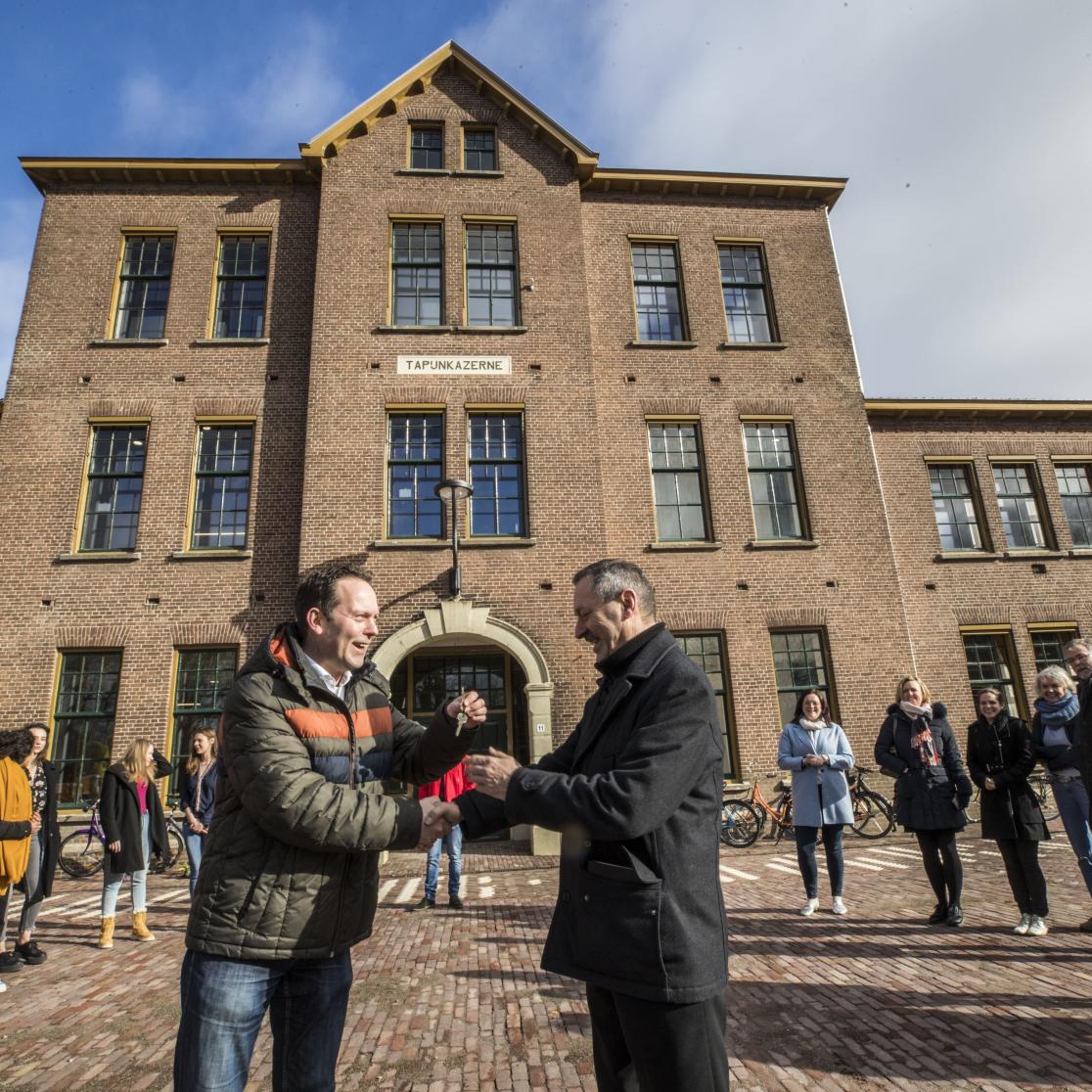
After the key handover ceremony on 3 March 2020 the first UM students and staff setteled in the renovated buildings.
